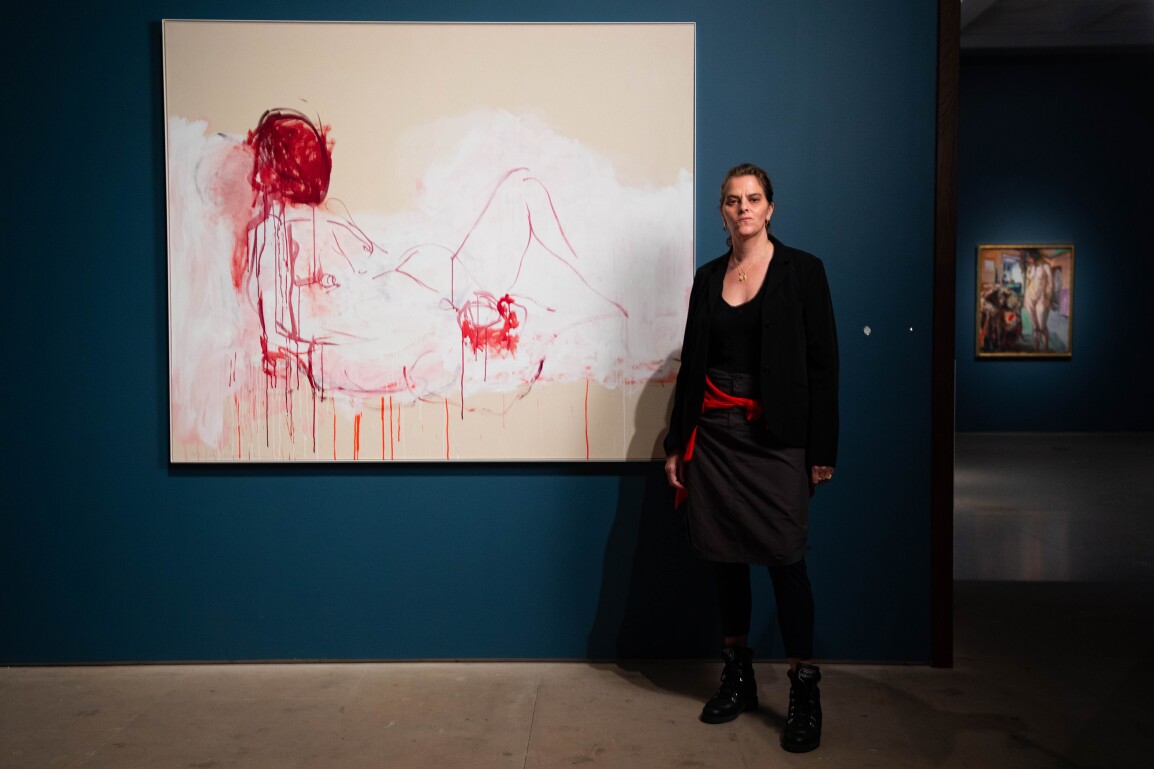I n the latest of Sotheby’s digital panel talks, Dylan Jones, Editor-In-Chief of British GQ magazine, hosted a fascinating conversation with the acclaimed artist Tracey Emin around her upcoming Royal Academy exhibition Tracey Emin / Edvard Munch: The Loneliness of the Soul.
Emin has been captivated by Edvard Munch since discovering his work while interested in linocuts and woodcuts in her teens, and here she tells how she “fell madly in love with him - not just his work, but him”. Describing him as “a kindred spirit”, she also discusses why she decided to focus the exhibition on the theme of loneliness.
Also joining the panel was Kari Brandtzæg, art historian and curator at the new Munch Museum in Oslo, where the Emin / Munch exhibition will travel next year and which will also see a new Emin sculpture after she won the competition to design a statue to welcome visitors. Her winning design is a nine metre high bronze figure of a woman, called The Mother, with Emin inspired both by Munch having lost his mother at a very young age, and her own late mother.

Brandtzæg, who has been working with Emin for three years to curate the show, calls it her “dream” exhibition and the process involved the pair exploring the extensive archive of Munch works in Norway. The final exhibition includes the watercolour Seated Female Nude, and the 1987 painting, Women in Hospital, which Emin cites as her favourite.
"Munch's work expresses universal feelings of jealousy, fear, hunger, love, regret, remorse – everything."
There was further insight from Simon Shaw, Vice Chairman of Sotheby’s Global Fine Arts, who contextualised the cultural impact of Munch and his work. Not only does Shaw suggest Munch has a genuine claim to have invented the selfie, but points out that his most famous work The Scream, has not one but two emojis created in his image.

Shaw describes the 1895 painting, which sold at Sotheby’s in 2012 for $120million (at the time, the highest price paid at any auction for any work of art), as a phenomenon and “a cornerstone of our visual culture”.
He also explains how Munch’s innovative approach to art was to depict what things feel like, rather than what they look like, a characteristic that Emin highlights as a fundamental reason for her feeling such a connection with the artist, identifying with how his work expressed “universal feelings from jealousy, fear, hunger, love, regret, remorse – everything”.
Claiming she could have Munch as her Mastermind topic, Emin admits that her obsession extends back to college, when her thesis was called “My Man Munch” and reveals what questions she would ask her idol, if she had the chance.
The event was produced in association with Intelligence Squared.
Banner image: Tracey Emin, Insomnia, 2019, Giclée print, 198 x 152.4 cm, Courtesy of the Artist. © Tracey Emin Studio; Edvard Munch,Self-Portrait à la Marat at the Clinic, Copenhagen, 1908–09. Photo © Munchmuseet.